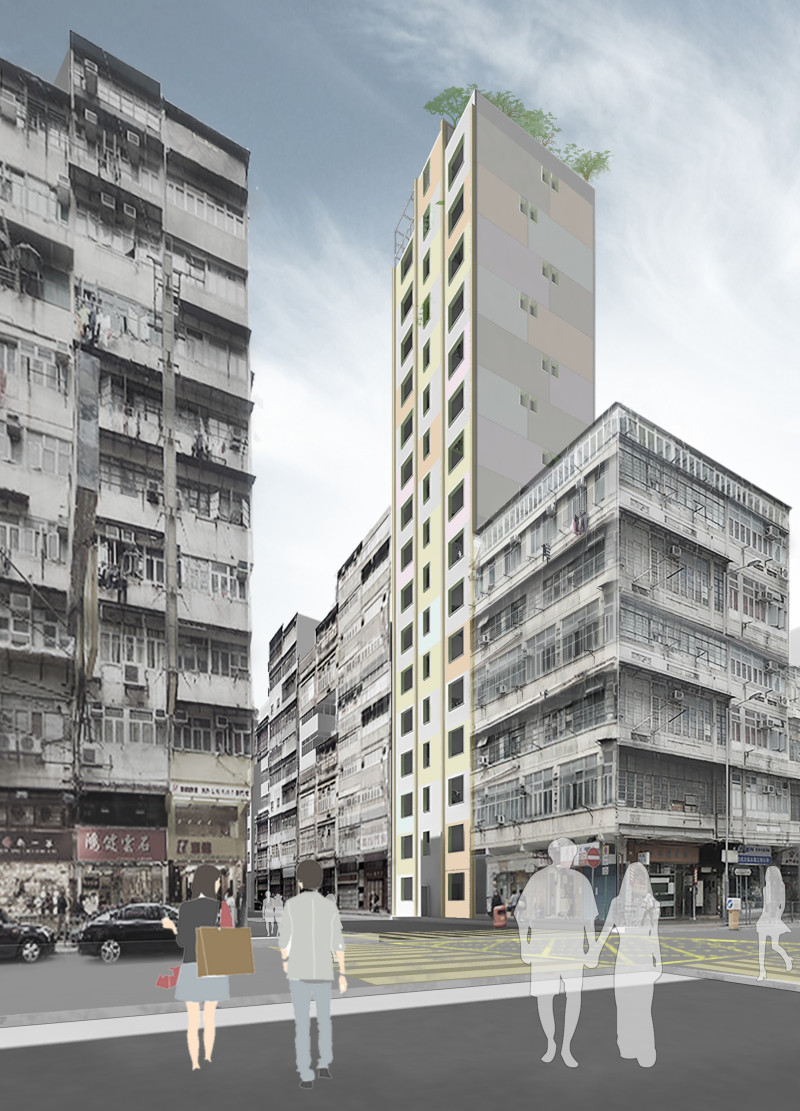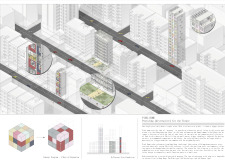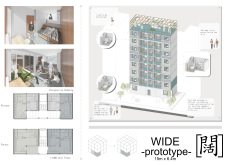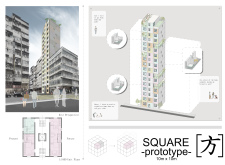5 key facts about this project
# Architectural Report: Pixel Home Project in Hong Kong
### Overview
The Pixel Home project addresses the challenges of residential living in the densely populated urban environment of Hong Kong. Its design aims to create adaptable living spaces that foster community interaction while efficiently utilizing a limited footprint. By exploring modular configurations—Narrow, Wide, and Square—the project seeks to accommodate varying family structures and evolving needs within a context where land is scarce.
### Spatial Configuration
The spatial organization is predicated on modular unit prototypes, each designed to fulfill specific living requirements. The Narrow prototype, measuring 5.6m x 6.4m, caters to individuals or small families with flexible layouts that promote open-plan living. The Wide prototype spans 15m x 6.4m, providing ample space for larger families and encouraging communal activities through integrated shared areas. The Square prototype, at 10m x 10m, balances flexibility with efficiency, capable of adapting to diverse living arrangements. Detailed floor plans illustrate current utilizations and potential expansions, incorporating movable partitions that allow for dynamic changes in spatial configuration as family dynamics evolve.
### Material Selection
The materials selected for the Pixel Home project prioritize sustainability and community engagement. Reinforced concrete provides structural support for high-rise elements, while extensive use of glass enhances natural lighting and visual connectivity with the neighborhood. Steel contributes to the lightweight, modular design, and sustainable wood is incorporated in interior finishes to create a welcoming atmosphere in communal spaces. This material palette not only supports durability but also aligns with contemporary architectural trends focused on environmental responsibility.
Rooftop green spaces serve as integral features, allowing for recreational gatherings and promoting social cohesion among residents. The design effectively blurs the boundaries between private and community spaces, encouraging interaction in a high-density urban context.






















































